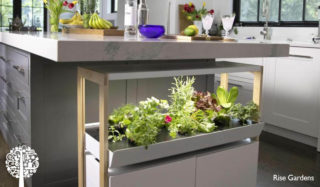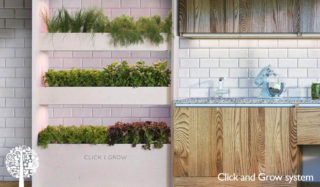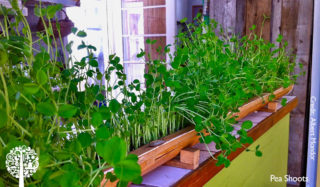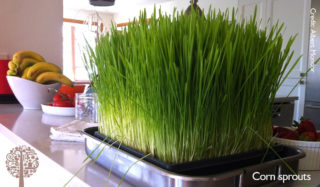How Indoor Farms Are Changing Agriculture And Leading To Food Security
With food shortages threatening some parts of the world and grocery bills rising dramatically, indoor urban gardening is increasingly popular as people strive for food autonomy.
Several technological products – indoor farms – make cultivating fruits and vegetables easy. Some indoor farms are equipped with aeroponic or hydroponic systems, while others include potting soil. They can be purchased online, in garden centers, or in hydroponic shops.
Kitchen Farms
Some small hydroponic kitchen farms, such as AeroGarden and AVA Byte, work with compostable capsules containing seeds and a growing medium similar to those developed by Nespresso and have revolutionized the world of coffee.
These compact growing systems are equipped with adjustable LED lights and produce various leafy vegetables and herbs in small spaces such as a kitchen counter. However, growing larger, more demanding crops like tomatoes and peppers in these units is challenging.
Rotating indoor farms are also available on the market. For example, OGarden is a growing system created in Quebec consisting of a veggie wheel that turns slowly. A lamp placed in the center of the wheel provides light for the plant’s growth and development.
Using a rotating indoor farm is relatively simple. All you need to do is put the seeds in the cabinet space provided and water regularly. Then, two to three weeks later, the seedlings are ready to be transplanted into the wheel.
Indoor Vertical Farms
More elaborate indoor growing systems rely on vertical hydroponics. Indoor vertical farms manufactured by Click and Grow, LG and Rise Gardens are modular and are arranged in series on a shelf or in a glass cabinet fitted with LED lamps. Most of these systems are freestanding and can be installed directly on the floor, while some built-in indoor farms can be stylishly integrated into a kitchen.
The Vertikaroma vertical cultivation system works with aeroponic technology. If you equip it with artificial LED lighting, this Quebec-designed system helps edible plants grow even in the darkest places. Nutrient-rich water is sprayed onto the roots of the plants.
Developed in the United States, the Aerospring and Tower Garden systems are growing towers. Plants are placed in a plastic cylinder pierced with holes; each column is equipped with a water tank at its base. Water is provided to the plants using a pump and piping. Like Vertikaroma, these growing systems work with aeroponics. Lights, which in some cases move as plants grow, are usually included.
Build Your Own Indoor Farm
You don’t have to buy a sophisticated growing system to produce edible plants indoors. It is possible to grow various herbs and vegetables in simple boxes or pots filled with potting soil installed on a kitchen counter or in a basement.
However, using an artificial lighting system is a crucial part of growing edible plants indoors. The sunlight that enters through the windows of a house or apartment is often insufficient to ensure these plants’ proper growth. This is why you should use LED lamps, which offer a light spectrum similar to the sun’s.
LEDs have many advantages since they require little energy (24V) and exceed fluorescent tubes’ lifespan. They give off very little heat and can be placed at a greater distance from the plants, between 60 and 100 cm (23″ -39″).
Another factor that affects the growth of edible plants indoors is temperature. In winter, our homes’ warm, dry air is not very suitable for most edible plants, especially herbs. So make sure you grow your herbs and leafy greens in a cool room – a temperature of 18ºC (64°F) is ideal – and a humidity level above 40%, ideally closer to 50%. Water your edible plants once every week during fall and winter if you grow them in potting soil. It is essential to remove any dead or diseased leaves regularly. Also, if your home’s air is relatively dry, regularly spray lukewarm water on and around the foliage of the plants you are growing.
Edible plants of tropical origin, such as eggplants, peppers and tomatoes, require a higher temperature than most other vegetables and herbs. So be sure to grow them under bright artificial light at a temperature between 20 and 24ºC (68-75°F). Grow these plants in a soil consisting of compost, sphagnum peat moss and perlite, then add a few handfuls (100 ml per plant) of slow-release natural granular fertilizer rich in nitrogen and potassium (5-3-8).
Edible Plants Suitable for Indoor Growing
Most edible plants can be grown in an indoor farm. Those best suited are usually herbs and fast-growing leafy vegetables such as Swiss chard, spinach, kale, lettuce, oregano and parsley.
You can also grow other crops that take a little longer to develop, such as broccoli, corn, peas and sunflowers, but they are always harvested before their maturity in the form of sprouts or young shoots.
Tomatoes can also give good production when grown in bigger indoor farms. However, opt for compact shrubby cultivars, such as ‘Tiny Tim’, ‘Totem’ or ‘Tumbling Tom’, for example. With a good fertilizing regiment, you can also grow eggplants, cucumbers and peppers that produce small fruits, such as Mini Bell and Lunch Box cultivars.
Remember, the pollination of fruiting vegetables must be carried out by hand with a small brush! Otherwise, yields will be low or non-existent.








